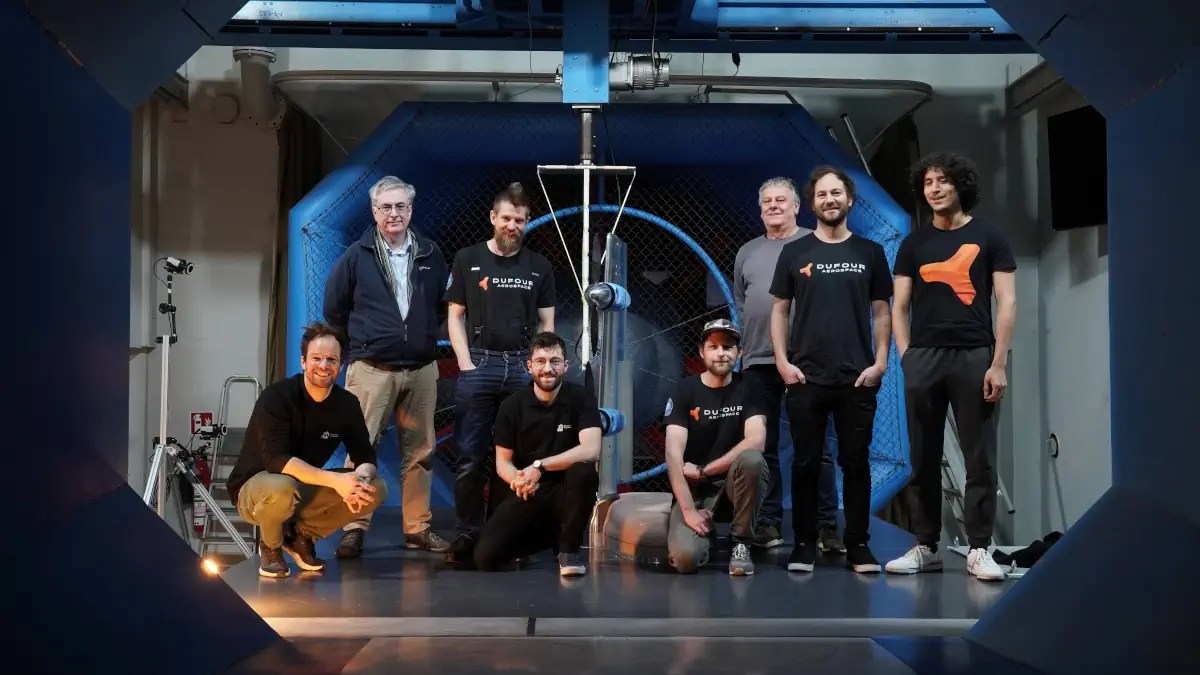In the dynamic realm of aerospace engineering, the wind tunnel serves as a crucible of truth, where the fate of aircraft programs hangs in the balance. Recently, the Dufour Aerospace Flight Physics team embarked on an exhaustive exploration of the aerodynamic characteristics of tilt-wing V/STOL aircraft.
Simple methods can yield valuable insights when interpreted effectively. Just a few tufts on a surface can provide a clear picture of the situation if given the chance. These approaches aid in comprehending your design. By incorporating more sophisticated techniques such as real-time flow analysis and visualization using multi-hole probes, as well as a network of strategically positioned force and torque balances, a profound understanding can be achieved. Both strengths and weaknesses of the design will be brought to the forefront. It takes a courageous engineer to confront the truth and scrutinize their design at this level. However, this commitment reflects the standard that the Dufour Flight Physics Team strives to uphold.
The Transition Challenge
Tilt-wing aircraft, designed to transition seamlessly between vertical takeoff and conventional fixed-wing flight, experience a shift in aerodynamics as the airflow on the lifting surfaces transitions from a slipstream-dominated to a freestream-dominated condition. The interaction between propellers and airframe during this transition phase presents an area of aerodynamics that is not commonly experienced in conventional aircraft. Existing simulation methods, predominantly tailored for conventional aviation, often struggle to precisely predict these intricate aerodynamic forces within the constraints of time and resources. Through the integration of proprietary methodologies with established commercial calculation techniques, Dufour endeavors to push the boundaries of aerodynamic forecasting in tilt-wing aircraft—an area where precision is crucial and errors are unacceptable.
Recently, the team methodically conducted wind tunnel tests using a 50% scale semi-span model of the Aero2 tilt-wing UAV at the GST wind tunnel in Immenstaad am Bodensee. These tests were designed to validate and enhance the aerodynamic calculation tools essential for forecasting the behavior of tilt-wing aircraft during the critical transition from hover to cruise flight, laying the groundwork for future innovations in aerospace engineering.
One of the primary objectives of the flight physicists is not only to comprehend the nuances of their current airframe designs but also to proactively work towards improving these designs and accurately predicting the flight behavior of current and future aircraft. Safety is a paramount concern, driving the team to validate all methods and predictions by cross-referencing calculations from various tools and experimental test data. A reliable wind tunnel model provides a foundational dataset for ensuring that tools align with reality.
Aircraft are meticulously designed to optimize their capabilities and meet mission objectives with maximum efficiency. The flight physics team collaborates closely with the control systems, simulation and flight test groups to maximize the efficiency of flight tests and optimize aircraft operations. Test results directly inform simulation, aiding in fine-tuning control systems and training pilots.
The campaign concluded with resounding success, as the team gathered a wealth of test points and diligently validated the current geometry of their Aero 2 aircraft. These findings not only affirmed the robustness of the design but also provided crucial insights for further enhancements in future iterations. With a solid foundation established through rigorous wind tunnel testing, the team stands poised to expand the horizons of traditional aerodynamic design.

